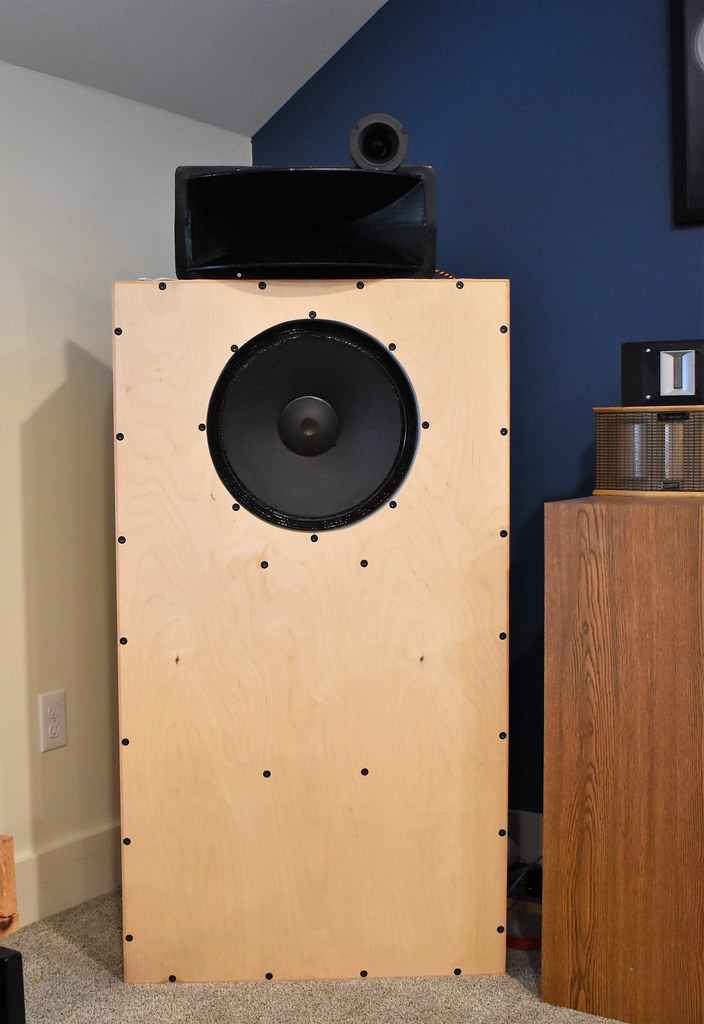I am not yet confident two 5” are going to work, because my application is open baffle, and I find it difficult to find drivers that can transition well from a pair of 15” woofers from 300 hz up to a waveguided tweeter. I suspect it will require back wings to work.A SB ADC in an elliptic waveguide and two 5" CAC.... could work.
According to Heissmann, an MTM with a small waveguide and two 5".... should give a pretty nice response:
https://heissmann-acoustics.de/en/dxt-wave/
A coaxial compression driver in a biradial horn looks to be both the best (and most expensive) solution. The one I saw in Crowe’s horn was B&C non metal driver. I might get most of the benefit from a higher freq horn like his 600 hz version and simply extend one of the 15” bass drivers to cross into that.

 DSC_0938 (3)
DSC_0938 (3) 40-1375
40-1375